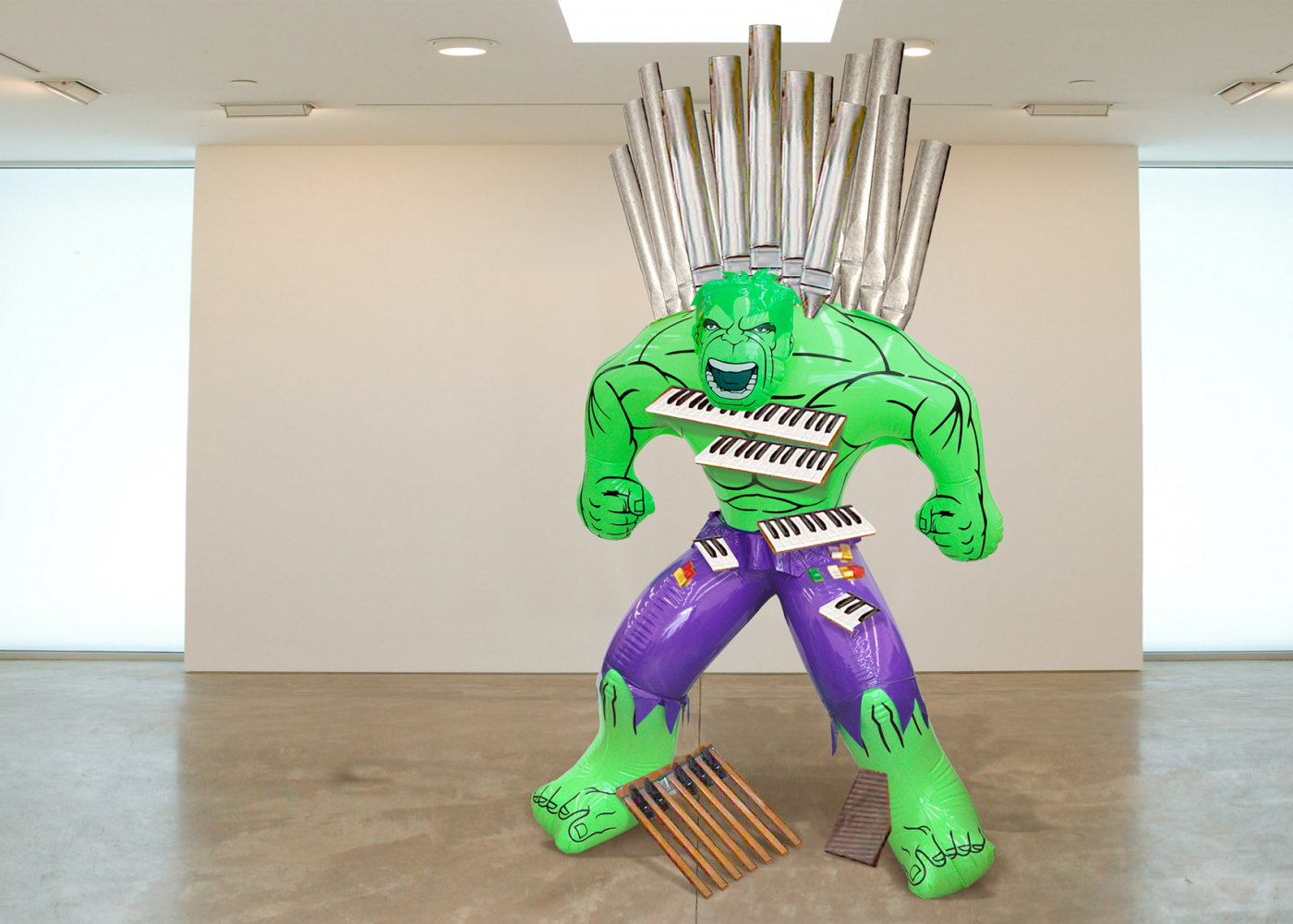
Hell is other people | Jeff Koons at the Centre Pompidou, Paris
Neil Stewart visits the Jeff Koons retrospective at the Centre Pompidou in Paris, and wonders when we all stopped actually looking at art

Neil Stewart visits the Jeff Koons retrospective at the Centre Pompidou in Paris, and wonders when we all stopped actually looking at art

The gallery-going culture has moved on. Where once, contemporary art shows resounded to scandalised, imbecilic mutters of “My child could have done that”, nowadays complainants have weaponised their children to climb on minimalist sculpture, smear mucky fingerprints on priceless oils, or vandalise monoliths – find me a Richard Serra that isn’t discoloured by the special chemicals used to eradicate the initials keyed into its surface by halfwits (and their parents).
They believe that they’ve a right to ignore it and let their children climb on that Donald Judd nonetheless
You do not get the sense that these are present-day Gordon Matta-Clarks sensing in the destructive act a radical new approach to creativity itself, so much as people who don’t understand what an artwork actually is: surely it must be a climbing frame, or an intrinsically worthless creative-commons work anyone can add to – it can’t just be. We live in a world of communal imaginary devices: financial instruments, stocks and shares, credit ratings. How can it be worth anything if it doesn’t possess function? These are people who seem to be incensed, incentivised, by the existence of anything beautiful, yet who do understand that the custom is for a certain respect to be shown to works of art. Recognising that, they believe that they’ve a right to ignore it and let their children climb on that Donald Judd nonetheless. It’s not just individuals: with dispiriting inevitability, the vast-scale renovation of London’s Tottenham Court Road Station looks set to mean the demolition of the intricate and unique Paolozzi murals in the station’s entrance. Unprofitable loveliness provokes existential dread, and must be destroyed; only that which can be monetised can remain.

You feel that of all the preeminent contemporary artists, Jeff Koons might be the one to salute such a move. A man who married his muse and turned consummation of their marriage into a series of high-gloss pornography portraits, he is the peerless commodifier of what might once have been termed the sublime. In art, “sublime” used to have a broader meaning than its current usage as pure praise; the Romantic tradition’s vast unpeopled landscapes were meant to make you feel small, awed, cowed – a “terror of the void”. The major retrospective of Koons’s work, which opened at the Whitney in New York last year and is currently on show at the Centre Georges Pompidou in Paris, has little in common with Romantic landscapes: here are giant-sized children’s inflatables, novelties refashioned in glittering but unprecious materials, copies of marble statues onto which have been set coloured mirrored spheres, scrying glasses for hoi polloi to see themselves (and their iPhones) beamed back at them. The void is still there. Like laughing at tragedy, our terror of it leads us to try and capture it, tame it, in photographs and souvenirs.
Bells go off whenever anyone steps too close to one of Koons’s balloon puppies to try and catch their own funhouse reflection in its mirrored surface, or to get themselves and the inflatable monkey lifebuoy into shot on the phone at the end of their selfie-stick
But then, it’s a little strange that a visit to the Koons show at the Pompidou, while visually overwhelming (it’s uncool to the nth degree, but I still love much of his work, especially those early 2000s Easyfun montages of glutinous foodstuffs, lush vegetation, panoramic landscapes, and soft pornography: inspired by advertising, they’ve gone on to, er, “inspire” others since), is so buckled up. Really, you should be allowed to put your arm round his giant metallic bunny, or lie down alongside his iconic – there’s another word whose meaning has vanished into the void – and disarmingly life-sized ceramic statue of Michael Jackson and Bubbles, for a photo-op. Yet bells go off whenever anyone steps too close to one of Koons’s balloon puppies to try and catch their own funhouse reflection in its mirrored surface, or to get themselves and the inflatable monkey lifebuoy into shot on the phone at the end of their selfie-stick. Meanwhile, odd prudery means that the room in which some of Koons and La Cicciolina’s more intimate family photos hang is barred to the under-18s even though it’s almost certain that under-18s see similar every day. No-one has to queue up behind a velvet rope and wait for a man in a little cap to let them step into the secret room that contains full-frontal nudity; Koons’s work is partly responsible for the fact that porn, the ultimate in his beloved banality, is on show in museums and galleries in the first place. (This may be unique to the Parisian incarnation of this show: the Pompidou seems to love making visitors queue at any opportunity. With its internecine lines of visitors snaking around the floors and stairwells, and charmless staff who respond to queries by pointing wordlessly at incomprehensible signage, it resembles nothing so much as immigration control at LAX on an especially bad day.)
When you get in to the Koons show, what you see is art of astronomical value – as decreed by the market anyway – carefully modelled on the cheapest kitsch. Junk you’d have thrown away made into works of art that cost more than every home you’ve ever lived in. You are gazing into the void of the sublime. Climbing on the statues, besmirching their perfect veneer, seems here less like a witless destructive act than a tremulous attempt to dissolve into the paradox, to stare into the mirrored surfaces and have some of that value reflected back onto you. C
Jeff Koons La Rétrospective runs until 27th April 2015